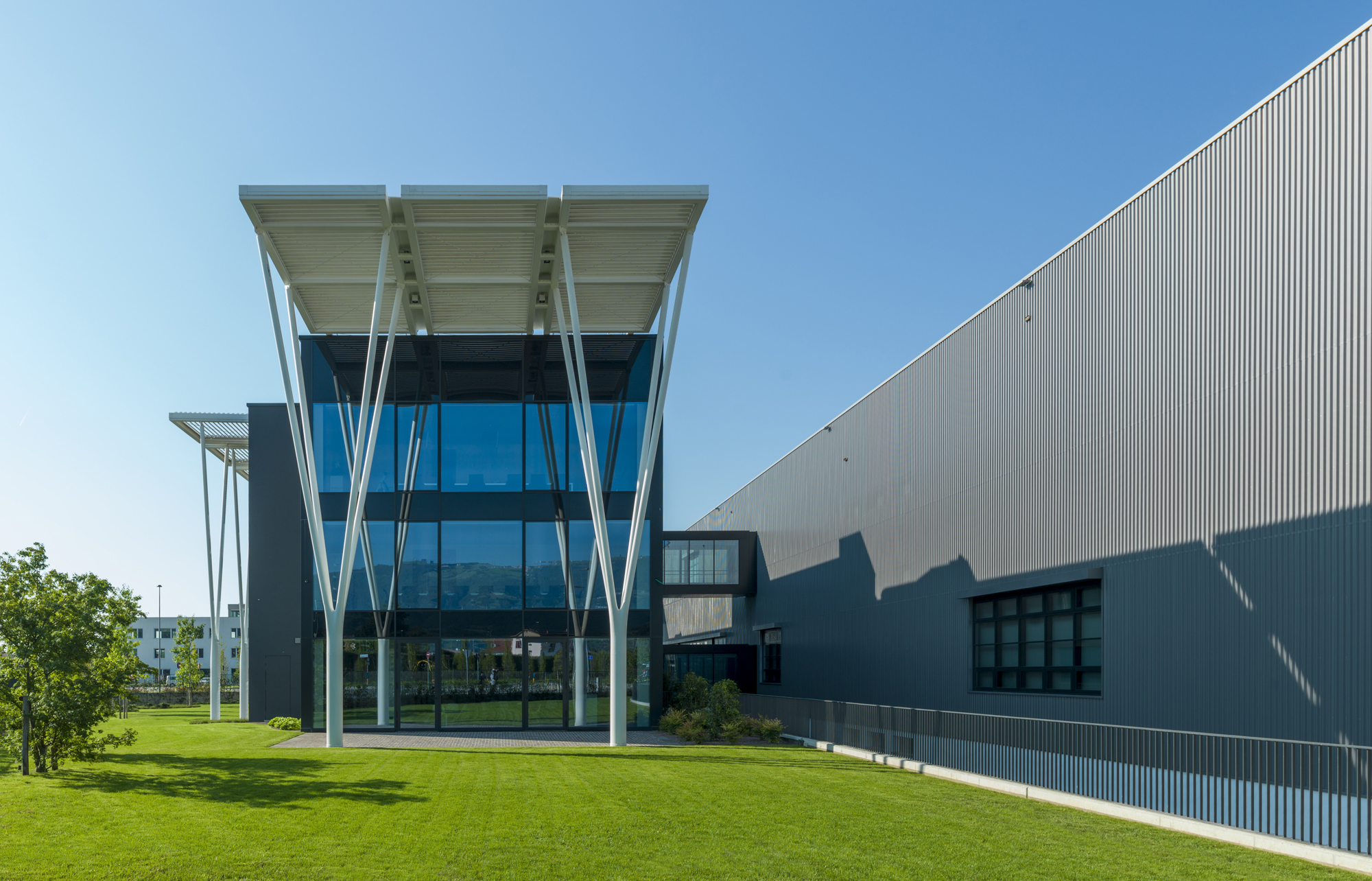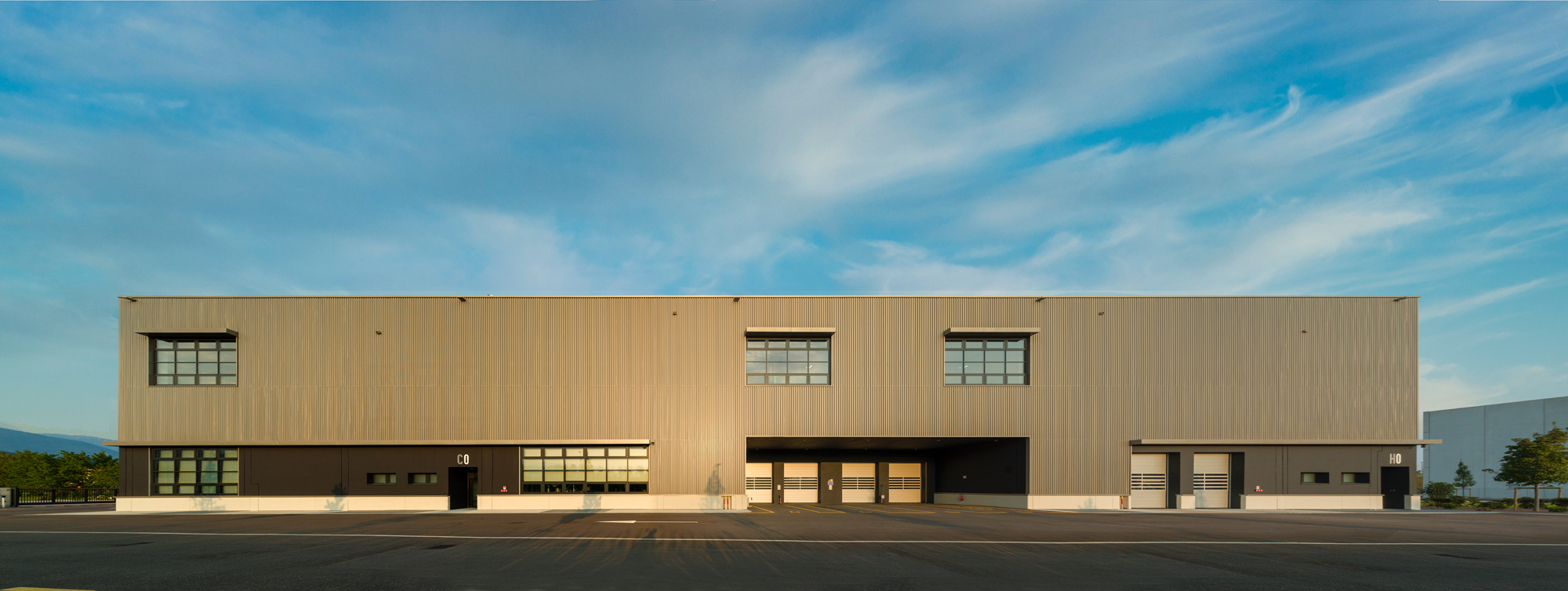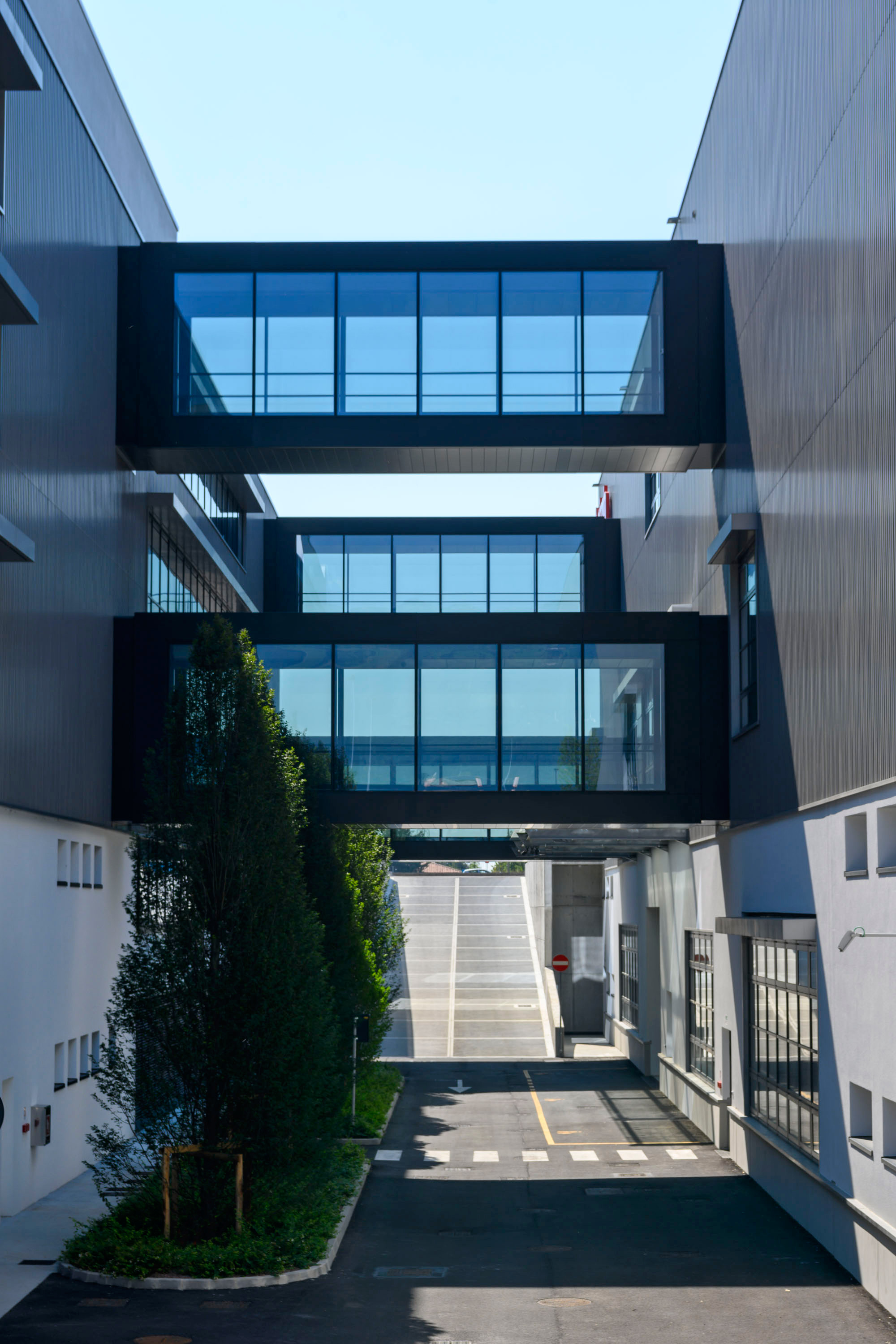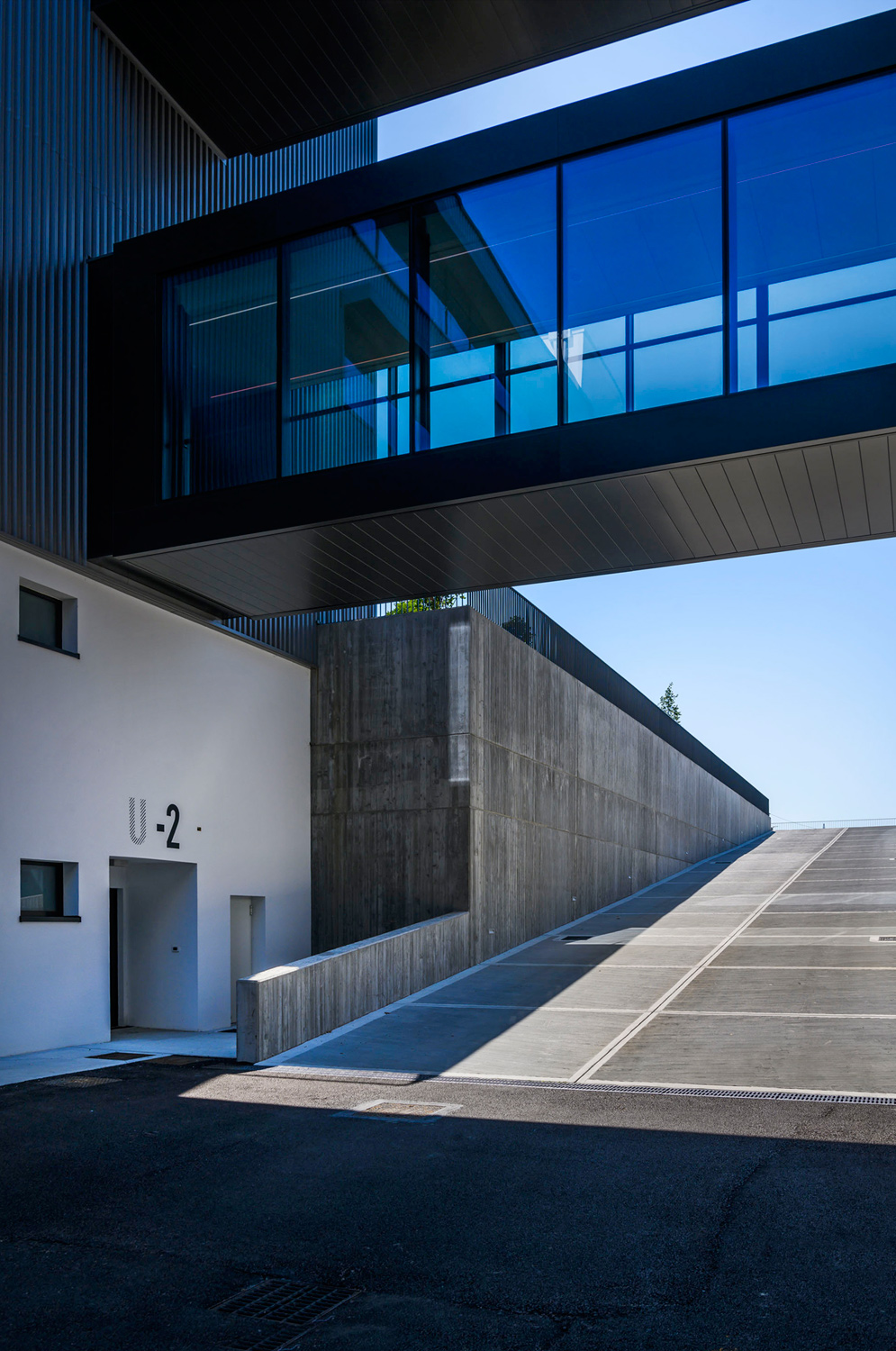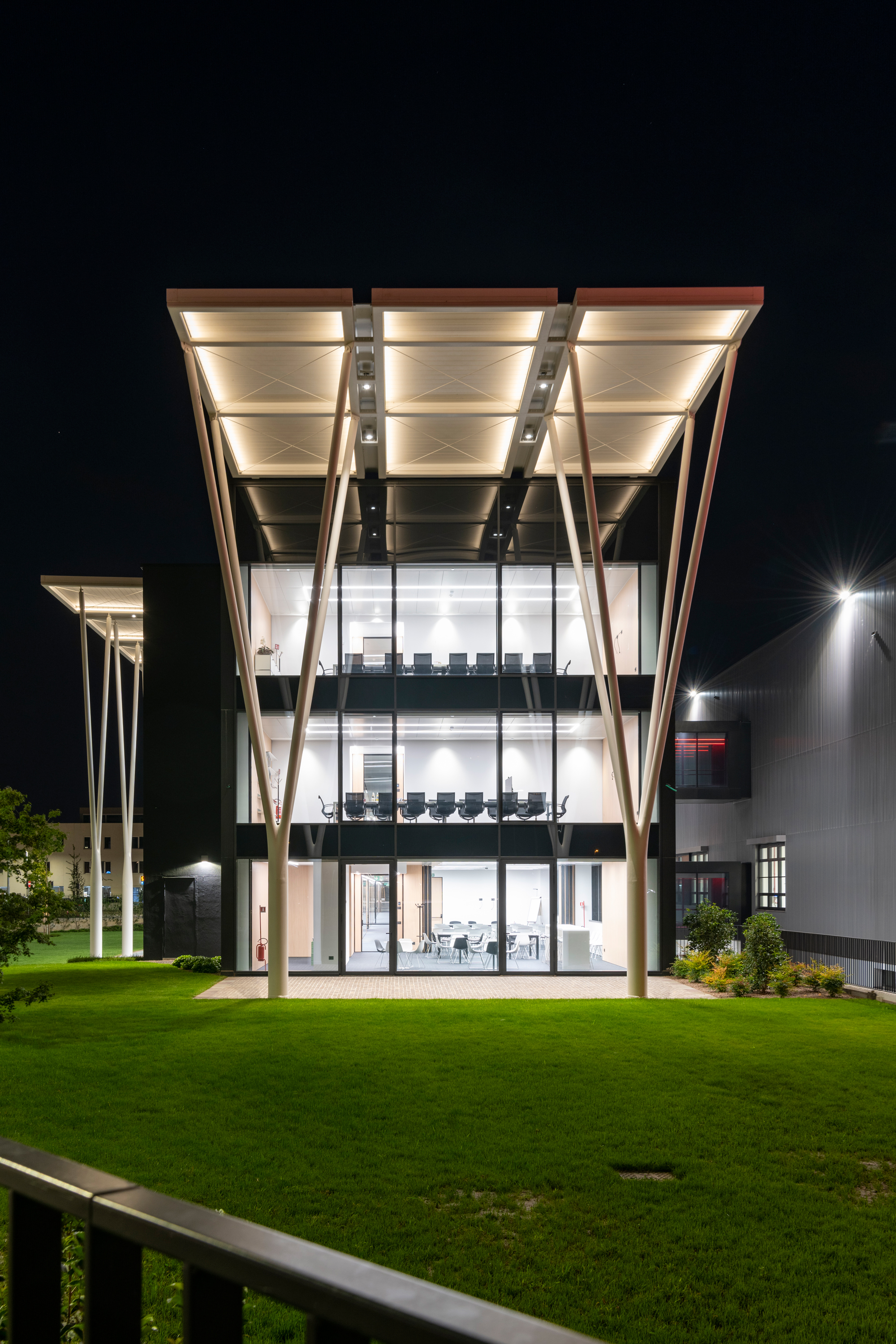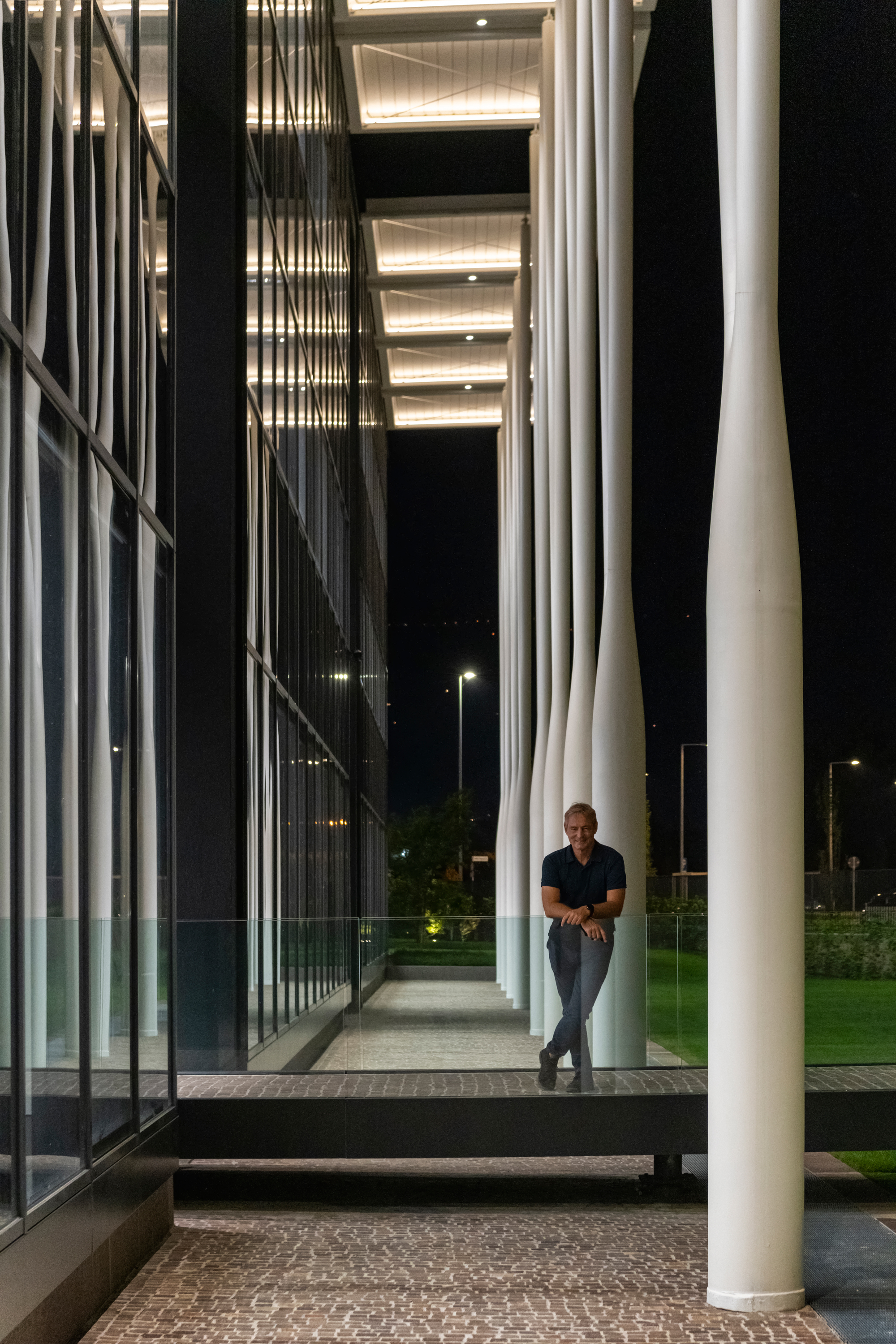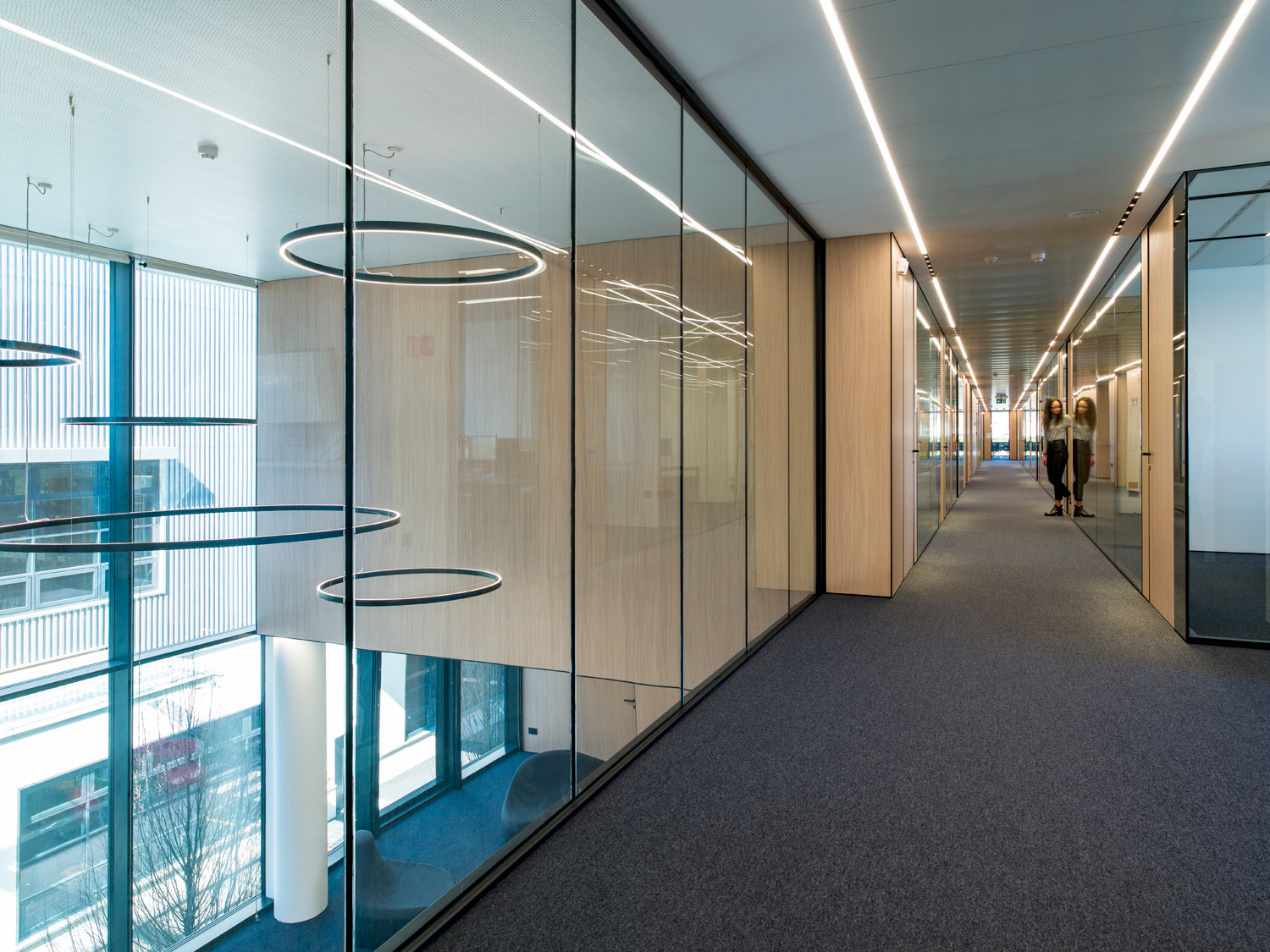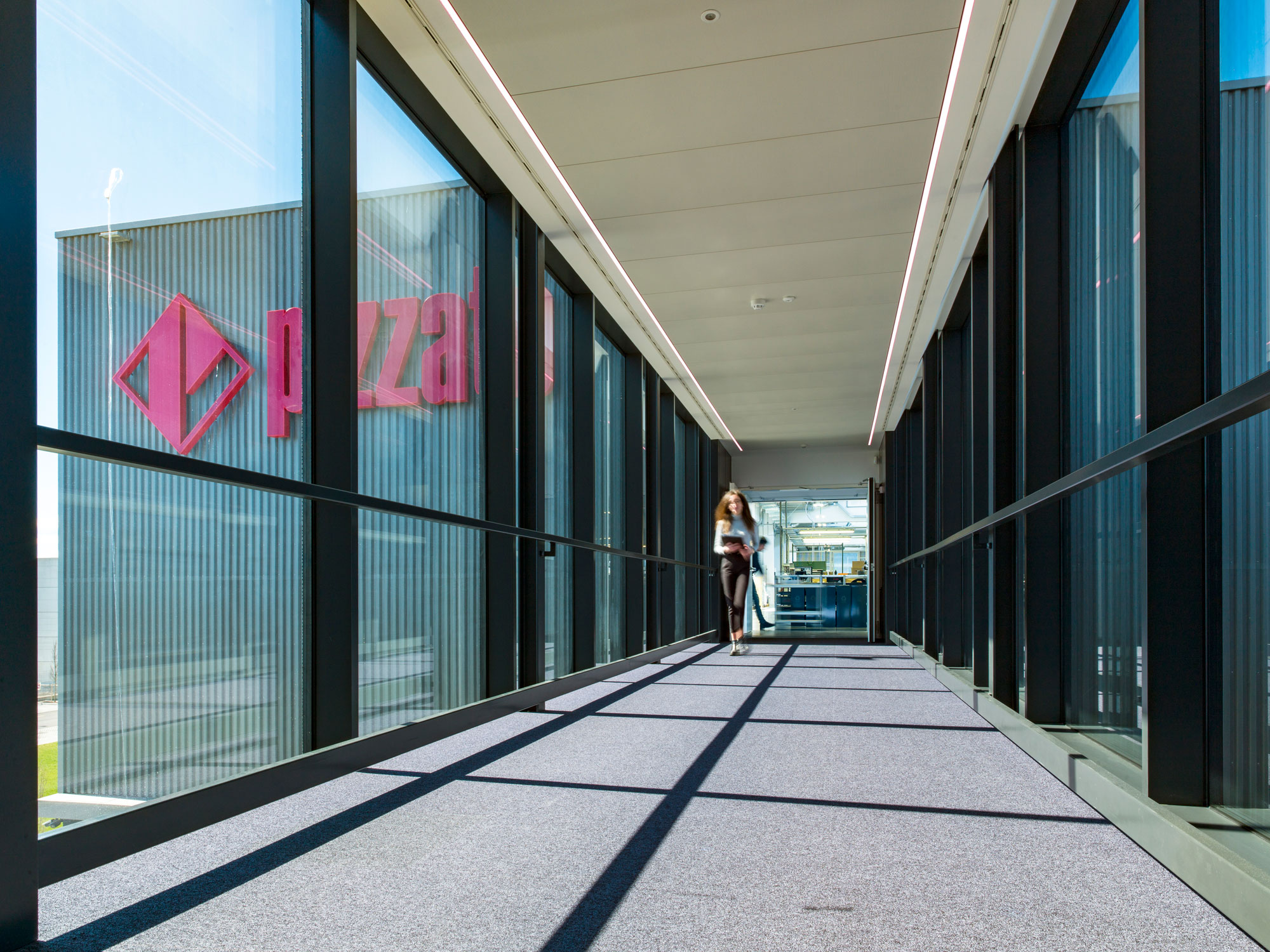Pizzato Elettrica
Industrial settlement and officies
Marostica Vicenza, Italy
client:
Pizzato Elettrica
year:
2020
area:
27000 sq.m.
photo credits:
Maurizio Marcato

The headquarters of Pizzato Elettrica, leading company in the production of safety electrical components, is situated in the industrial area in Marostica. The compound develops over roughly 27.000 square metres – production areas, warehouses for raw materials and finished products, a mechanized warehouse, research laboratories and offices – where over 250 people work every day. In addition to satisfying the functional programme, the project organised the composition of volumes and connective systems – hall, corridors, boardwalks, internal roads – so as to create interruptions, deviations and movement of façades, generating an ever changing “industrial landscape”. The façade materials are plaster, glass and aluminium, with alternating colours, gray, black and white; resulting in a composition organised in open structures and series of sequences. Architecture relies on geometry as its generating principle; complexity is born from the game established between each single piece in function of its position and characteristics, and from the stimuli it activates. The main façade, with the public parking areas, is characterized by a rhythmic sequence of tree-shaped metal columns which support the sunshades that crown the glass façade of the executive offices. The columns defy gravity: the connection between “branches” and “trunks” is a steel fusion joint that guarantees a fluid transition from the column to the inclined supports. The harmonious and differentiated rhythm of the columns becomes an element of order and spatial reference, a real construction landmark. Great attention was given to the quality of work spaces and ergonomic aspects both in the production and office areas to workers’ health and safety, with one single goal: providing the best possible work setting. The project analysed every single detail: lighting, ventilation, visibility; the orientation and size of glass walls; the layout of the production lines; the paths and the correct placement of work stations. The offices are characterised by an integrated system that combines all architectural elements – false ceilings, walls and floors – with the plant components – heating and cooling systems, ventilation, lighting and acoustic requirements with the aim of ensuring an extremely comfortable work environment. An avant-garde automation system controls every single technological and plant component, from the quality and temperature of the internal air to the safety systems, from illumination to sun screens: an ensemble of technology, sustainability and energy efficiency.


